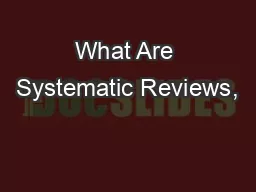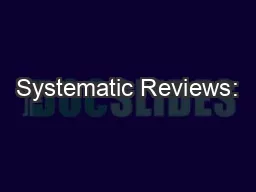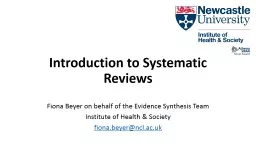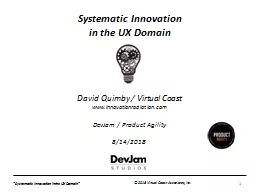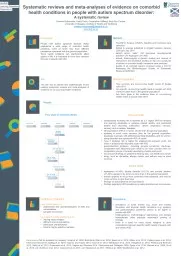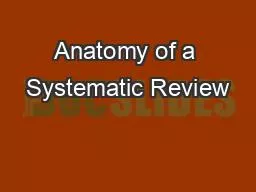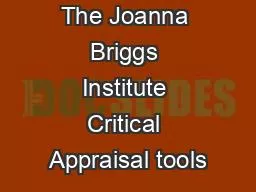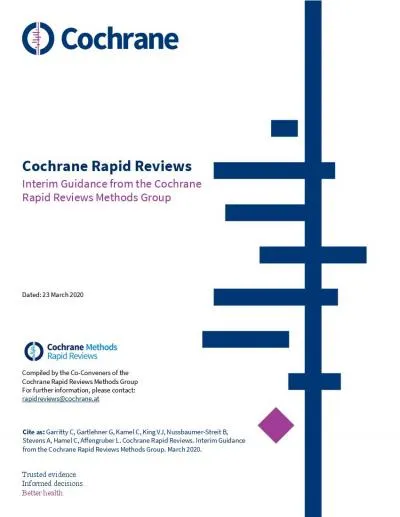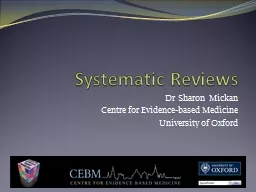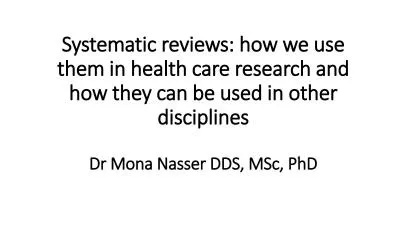PPT-Steps for Conducting Systematic Reviews
Author : ruby | Published Date : 2024-01-03
Irena Bond Associate ProfessorLibrary Manager Massachusetts College of Pharmacy and Health Sciences MCPHS irenabondmcphsedu June 28 2023 Goals To provide a s tepbystep
Presentation Embed Code
Download Presentation
Download Presentation The PPT/PDF document "Steps for Conducting Systematic Reviews" is the property of its rightful owner. Permission is granted to download and print the materials on this website for personal, non-commercial use only, and to display it on your personal computer provided you do not modify the materials and that you retain all copyright notices contained in the materials. By downloading content from our website, you accept the terms of this agreement.
Steps for Conducting Systematic Reviews: Transcript
Download Rules Of Document
"Steps for Conducting Systematic Reviews"The content belongs to its owner. You may download and print it for personal use, without modification, and keep all copyright notices. By downloading, you agree to these terms.
Related Documents



